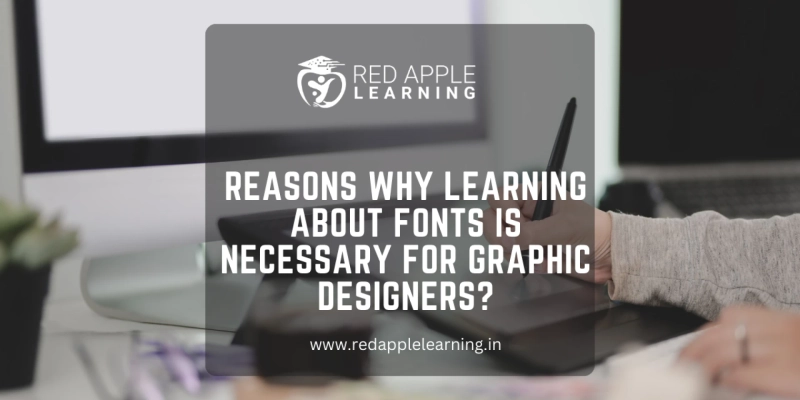Typography is a fundamental element of graphic design, and fonts play a pivotal role in shaping the visual identity of any design project. Graphic designers who invest time in learning about fonts and mastering typography gain a competitive edge in the industry. Therefore, in this blog, we will explore five compelling reasons why learning about fonts is necessary for graphic designers.
5 Reasons Learning About Fonts are Necessary for the Graphic Designers are as follows:
Typography Sets the Tone
Fonts have the power to convey emotions, establish a brand's identity, and set the tone for a design piece. Different fonts evoke different feelings and perceptions. For instance, a sleek and modern sans-serif font may be used to communicate a sense of professionalism and innovation, while a playful script font can create a whimsical and friendly atmosphere. Understanding the psychology of fonts and their impact on viewers is crucial for graphic designers to make design choices that align with the intended message and audience. With the assistance of graphic designing courses in Kolkata, you can easily learn about typography.
Enhances Visual Hierarchy
An essential aspect of graphic design is guiding the viewer's eye through the layout, ensuring they absorb information in the intended order. Typography plays a significant role in creating visual hierarchy. Learning about fonts enables designers to effectively use variations in font size, weight, style, and color to emphasize important information, establish a clear hierarchy, and guide the viewer's attention. This skill is invaluable when designing anything from websites and brochures to posters and advertisements.
Fosters Brand Consistency
For businesses and organizations, maintaining brand consistency is essential for building recognition and trust. Fonts are a crucial part of brand identity, and graphic designers need to ensure that the fonts used in various marketing materials align with the brand's established guidelines. By understanding fonts, designers can select and apply the right typefaces consistently across all brand collateral, reinforcing brand recognition and trustworthiness. Here is another blog that will help you in learning about the Importance of Graphic Designers in Branding.
Optimizes Readability
Graphic designers often work with text-heavy content, such as magazines, books, and websites. In such projects, the readability of the text is paramount. Learning about fonts equips designers with the knowledge to choose fonts that enhance readability, considering factors like line spacing (leading), kerning, and legibility. A well-chosen font can make lengthy text more digestible and engaging for readers, improving the overall user experience.
Empowers Creative Freedom
While it's crucial to adhere to design principles and brand guidelines, creativity is at the heart of graphic design. Learning about fonts doesn't limit a designer's creativity; rather, it enhances it. Knowing how to pair fonts effectively, experiment with typography, and push the boundaries of font design allows graphic designers to create unique and eye-catching visuals that stand out in a crowded marketplace. Fonts are a versatile tool that can be customized and manipulated to match a specific design vision.
To Wrap Up
In the world of graphic design, fonts are not just letters and characters; they are the building blocks of visual communication. Learning about fonts and typography is necessary for graphic designers because it empowers them to set the right tone, create effective visual hierarchies, maintain brand consistency, optimize readability, and unleash their creativity. If you are an aspiring graphic designer, enroll in a graphic designing course in Kolkata and learn each and every aspect of graphic designing easily. As the design industry evolves, typography remains a timeless and essential skill that separates exceptional designers from the rest. So, whether you're a seasoned professional or an aspiring graphic designer, investing time in understanding fonts is a path to success in this dynamic field.



